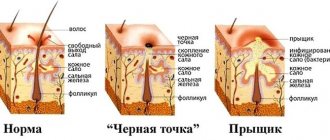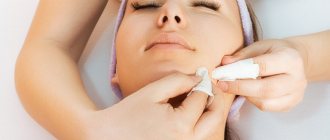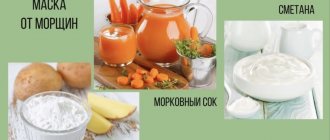When choosing a face mask, we are guided by individual preferences, problems that need to be addressed and, of course, quality. Many people prefer to make their own face masks, carefully selecting the ingredients, while others prefer to purchase a ready-made mixture for application to the face. Both the first and the second, in order to obtain the desired result and minimize unwanted effects, you need to familiarize yourself with the rules for applying masks to the face, which estet-portal.com will describe in this article.
Why is it important to follow the rules for applying face masks?
When choosing a mask, we want the skin to absorb the maximum of beneficial substances from it and gain smoothness, beauty and radiance in the shortest possible time. Despite the fact that some masks really allow you to see an immediate effect after the first application, most of them are intended for use in certain courses - this allows you to consolidate the desired effect.
You can get the desired effect and minimize the risk of unpleasant consequences by following the rules for applying masks to your face.
In addition, it is important to understand that any, even the most expensive, or self-prepared natural mask may not provide the proper result if you do not follow the rules for applying masks to the face. Therefore, below we will consider 6 basic such rules, namely:
- course application of masks;
- skin cleansing;
- prohibited areas when applying masks;
- maintaining cleanliness;
- complete relaxation;
- maximum accuracy.
The first rule of applying face masks: stay the course
The course during which you need to apply the mask must be completed in order to get the maximum effect that you want to achieve. Most often, the duration of a course of applying a mask to the face is about a month.
This means that the selected mask must be applied once or twice a week, which is 4-8 times throughout the month.
If you do not get the desired effect, you can choose one of two options: repeat the course in a week or choose a different recipe.
How to cleanse your facial skin: methods and rules
Steam baths
How to clean facial pores with steam? Such baths are beneficial for all types of epidermis, clean out pores and improve microcirculation.
If your epidermis is dry, then do baths once a week, and if you have an oily skin, such procedures are suitable for everyday use.
For baths there are devices that create steam, and if such a device is not available, you can cover yourself with a scarf or blanket. Sit like this for a while, just don’t lean close to the steam. The steam can damage small blood vessels on the face and even cause burns.
To make the procedure more effective, add a few drops of ether suitable for your dermis to the water, or a dried collection - it could be chamomile, elderflower, lavender, thyme.
In other words, steam baths can be done for no more than 20 minutes, after which you need to wash and cleanse your face with a gentle scrub, and make a nourishing or moisturizing mask.
But, remember, if there are purulent acne on your face, then steam baths cannot be done, because... steam will serve to further multiply the infection. Dilated vessels also impede the implementation of this procedure.
Facial skin cleansing masks
First of all, cosmetologists recommend making cleansing masks, mostly clay-based.
However, you can purchase ready-made formulations or make them yourself by purchasing clay at the pharmacy.
For example, the blue type of cosmetic clay powder is indicated for dermis with rashes, shine, and acne.
Pink clay is indicated for combination and normal type dermis.
Thin, dry dermis will respond well to the red type of clay, and for aging epidermis - yellow.
Black clay is the best cleanser. It can be used by women with dry and oily skin.
Recipe for any type of clay mask
The simplest thing is to add such an amount of purified cool water to the clay so that the mass resembles sour cream without lumps. The mask is applied to the face for 12 minutes, and then the face is washed with warm water. After this, use your day or evening face cream.
You can add an ether to the clay that is suitable for your type of epidermis and the goals you want to achieve with the product.
You can also add chicken yolk to the clay slurry - this mask will be good for oily and combination epidermis.
In conclusion, we talked about the simplest and most affordable ways to cleanse your facial skin. The main thing is to know and do these procedures regularly.
If you liked the article, give it a like! Please leave your comments at the bottom of the page. I will be glad to see you again on the pages of my blog.
The second rule of applying face masks: cleanse the skin
Cleanliness is the key to healthy skin. That is why, before carrying out any procedures or applying masks to the face, it is necessary not only to wash your face, but also to remove impurities from the pores in order to open the way for the penetration of the active substances of the beauty product.
Methods that are good for cleansing the skin:
- steam bath;
- peeling;
- hot compress.
If you choose peeling to cleanse your skin, you need to do it an hour before applying the mask. Other methods can be used in a shorter period of time before using the selected composition.
Folk remedies
Make a peeling that has a non-aggressive effect on the facial skin, based on natural ingredients.
Steaming masks
Before applying, take into account some recommendations:
- The procedure is carried out using herbal compresses, water steam or paraffin applications. The main condition for the procedure is the absence of rosacea mesh and satisfactory tolerance of high temperatures.
- Before applying the mask, expand the gland ducts as much as possible to remove pustules and dark spots.
- The steaming time depends on the initial temperature of the liquid. To avoid increasing blood pressure, give preference to warm solutions. Steam for 5 - 7 minutes, then apply the composition.
Steaming mask for oily skin
Active work of the sebaceous glands leads to unhealthy skin color and enlarged pores. A steaming mask will help normalize their activity and saturate the epidermis with oxygen.
Ingredients:
- Dead Sea mud (20 g);
- Grape oil (5 ml);
- Tea tree oil (2 drops).
Preparation:
Place the dirt in a bag and immerse it in warm water for 10 minutes. Heat grapeseed and tea tree oil in a water bath and add to the mud. Spread the prepared mixture on your face with a spatula and cover with a damp cloth to prevent the mask from drying out. Carry out the procedure once every 2 weeks.
Mask for dry skin
The procedure improves microcirculation, collagen and elastin synthesis, smoothes wrinkles and removes toxins.
Ingredients:
- Gelatin (15 g);
- Honey (5 g);
- Olive oil (10 ml).
Preparation:
Pour hot water over gelatin and mix well. Add olive oil and honey. Apply the finished mixture to the skin and cover with cling film. After 20 minutes, wash with cool water.
Mask for sensitive skin
The mask evens out the complexion. Use before sunbathing.
Ingredients:
- Oatmeal (10 g);
- Chamomile (5 g);
- Plantain (5 g).
Preparation:
Grind the plants together with oatmeal. Pour hot green tea over the powder. Apply the resulting mixture evenly to the skin and cover with a damp cloth. Rinse off the mask with cool water after 15 - 20 minutes.
Oatmeal masks
The mask has many advantages, but there are also contraindications. Do not use if you suffer from celiac disease - intolerance to cereals.
Recipe No. 1
Ingredients:
Honey (30 ml); Oatmeal (20 g).
Preparation:
Grind the cereal in a blender and combine with honey, heated in a water bath or in the microwave. Apply the mixture to problem areas and after a quarter of an hour, rinse with cool water. You can increase the effectiveness of the mask if you pre-steam the skin with a herbal infusion before applying.
Recipe No. 2
Additional products will help moisturize your face and eliminate and prevent flaking.
Ingredients:
- Honey (20 ml);
- Oatmeal (20 g);
- Avocado (50 g);
- Olive oil (10 ml).
Preparation:
Mix the components and apply the resulting composition with massage movements onto the skin. After 30 minutes, remove with a cotton pad and wash with cool water.
Recipe No. 3
An oatmeal mask for oily skin is effective thanks to lemon, the juice of which refreshes and rejuvenates.
Ingredients:
- Oatmeal (30 g);
- Lemon juice (20 ml);
- Honey (20 ml).
Preparation:
Heat the honey in a water bath, add fresh lemon juice and oatmeal. Before use, steam your facial skin and apply the mask to problem areas.
Video recipe
Home peeling
The procedure rejuvenates the face and improves metabolic processes in the epidermis.
Recipe No. 1
Salt peeling removes pigment spots, removes dead and keratinized cells, leaving the skin soft and velvety. Mix a tablespoon of sour cream with the same amount of salt, apply the resulting mixture to your face.
Recipe No. 2
Peeling with oatmeal and honey is no less effective.
Ingredients:
- Oatmeal or crushed oats (2 tablespoons);
- Chopped almonds;
- Cream (1 teaspoon);
- Rose oil (1 drop);
- Green tea or boiled water (1 teaspoon).
Preparation:
Using a mixer, mix cream, rose oil and green tea, add the mixture to oatmeal and almonds, let the mixture brew for at least 15 minutes. Moisten your face with a napkin, apply the product and leave for 15-20 minutes. After time, rinse off the peeling with cool sparkling water, blot with a dry paper towel and apply moisturizer.
Deep cleaning
The procedure is simple and every woman can do it at home.
- Disinfect your hands and face.
- Treat the skin with scrub or peeling, rinse with warm water.
- Steam your face with chamomile herbal tea to open pores.
- Remove blackheads with light finger pressure.
- Wipe your skin with an alcohol-based toner to disinfect the surface and tighten pores.
- Apply moisturizer.
Video instructions
The third rule of wearing masks: avoid restricted areas
The skin of the face is constantly visible, so it is unacceptable to injure especially delicate and sensitive areas - the skin around the eyes and the delicate skin of the lips. For these areas, it is necessary to use only proven and high-quality products that are created specifically for treating the skin of the lips and the area around the eyes.
Failure to comply with this rule can lead to, although correctable, unpleasant phenomena - redness, burning, dry skin and even the appearance of allergic reactions. Therefore, it is necessary to approach work with these areas with extreme caution.
The fifth rule of applying face masks: work carefully
Both applying the mask to the face and removing it must be done with the utmost care. Try to apply the composition evenly, avoiding the ultra-sensitive areas around the eyes and lips. When removing the mask, try not to stretch the skin.
Neatness, cleanliness, relaxation are important components of proper application of masks.
A good way to enhance the effect of the mask is to wipe the skin after removing the composition with a previously prepared infusion of medicinal herbs. This must be done with disposable cotton pads or gauze wipes to avoid contact of pollutants with the skin.
How to prepare your face for applying a cleansing mask
Sobesednik.ru tells you how to properly prepare your face for applying a mask, depending on your skin type.
We often write about face masks because we consider this a very important procedure, especially for women after 30 years of age, when they have to take more careful care of their skin. There are several useful tips for preparing the skin before applying masks:
1 Cleanse your skin with toner or lotion.
2 You can also resort to using a scrub (1/2 of an apple, grated on a fine grater, mixed with 1 tablespoon of ground coffee beans).
3 Make relaxing compresses on the eyes (from weakly brewed black tea or chamomile tincture).
4 After applying the mask, you should relax as much as possible. It is best to lie down for 20–30 minutes.
Decide on your skin type
• Dry
Do you often feel dry skin and suffer from flaking? Then you should pay attention to nutrition and hydration.
Olive mask
A mask made from olive oil has a remarkable property. You need to apply the product to the skin and leave for a few minutes. This is exactly the type of mask when the excess needs to be removed with a napkin.
• Oily
Do your forehead, nose and chin often shine due to increased oil production? Then your skin type is combination. You need to choose masks for combination and oily skin.
Egg mask
Beat one egg white until foamy, add 20 drops of lemon juice. Stir everything and apply evenly to the face. When the first layer dries, apply the second layer. Keep for 15 minutes, rinse with plenty of water.
• Normal
Do you not suffer from oily shine or suffer from flaking? Your actions are aimed at maintaining the skin's water balance and cleansing.
Honey mask
Take two tablespoons of flour, add whipped egg white and a spoonful of honey. This mask is ideal for normal skin.
Normal facial skin needs masks that normalize the skin's water balance / Global Look Press
Application technique
The mask should be applied from the chin, from the upper lip and from the wings of the nose to the temples.
The mask is not applied to the skin around the eyes. There you can apply eye cream.
The average duration of action of masks is usually from 15 to 30 minutes. If you feel a burning sensation or a feeling of tightness, the mask should be washed off earlier.
It is best to wash off the mask with warm boiled water and then rinse your face with cool water.
You need to remove the mask with light movements without stretching the skin.
Don't forget to apply moisturizer afterwards.
How often should I do it?
In general, masks are recommended to be applied 1-2 times a week for a month. The procedure can be repeated after two months.
The sixth rule of applying face masks: completely relax
To maximize the effect of the mask, you need to relax after applying the mask to your face. Try to avoid excessive mobility. The ideal option would be to take a bath after applying the mask or relax on the sofa. You can spend time reading a book or just lie down in silence, not worrying about anything - let not only your face, but your whole body rest.
We would also like to add that before trying a new recipe, you should first check whether you are allergic to one of the components of the mask. This can be done by applying the composition to a small area of skin and waiting 20-30 minutes. The absence of any redness, rash, itching and burning indicates that this composition is suitable for you. Estet-portal.com hopes that the above rules for applying face masks will make your home treatments not only enjoyable, but also as useful as possible.
The essence of the procedure
Steaming helps to expand the pores, removing toxins, makeup residues, impurities, and sebaceous secretions.
After this procedure, the pores open, and the skin becomes softer, more supple and elastic.
You should steam your face every time before such manipulations as deep cleansing the skin at home, applying nourishing and healing masks, removing blackheads, blackheads and pimples.
Oily and combination skin especially needs this procedure.
How to steam your face?
It should be noted that a poorly performed steaming procedure can lead to tragic consequences - irritation, redness, an allergic reaction, or even a thermal burn. That is why it is necessary to prepare properly for it.
Before steaming your face before applying a mask or cleansing, you need to properly prepare it:











